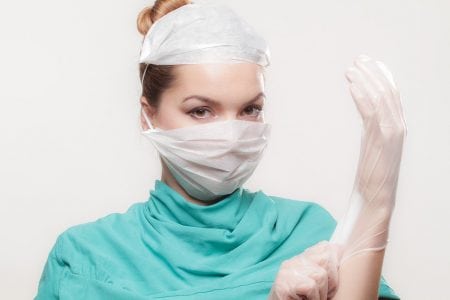 The development of allergic reactions to latex things has become a particularly urgent problem. The scope of products containing latex is very wide. Latex is a part of materials for the manufacture of medical and household gloves, syringes, condoms, balloons, tires, nipples, rubber toys, soles of athletic shoes, etc. Imagine that latex contains about 40,000 items of general goods.
The development of allergic reactions to latex things has become a particularly urgent problem. The scope of products containing latex is very wide. Latex is a part of materials for the manufacture of medical and household gloves, syringes, condoms, balloons, tires, nipples, rubber toys, soles of athletic shoes, etc. Imagine that latex contains about 40,000 items of general goods.
Latex itself is the milky juice of plants of the genus rubber containing proteins, salts and other components. In the production of latex products use a variety of technologies, which determines the level of their allergenicity.
In general, the immune response of the body to latex is caused either by the release of a large volume of immunoglobulin E, or by the formation of a clone of sensitized lymphocytes; other causes cause allergies extremely rarely. When allergic interaction with products containing latex is marked by multiple sneezing, itching and nasal congestion. Sometimes, attacks of suffocation (with inhalation of latex proteins), “wheezing” breath, hives can occur. The most serious reaction to latex is anaphylaxis, the signs of which can appear immediately after interaction. The consequences of an allergic reaction very quickly progress, cause a strong decline in blood pressure, swelling of the tongue and larynx, rash on the skin, fainting. Anaphylaxis should be treated immediately, calling an ambulance, as it can lead to death.
Allergists specify that direct physical contact with latex objects does not often lead to the development of allergy and anaphylaxis, like the inhalation of latex proteins adsorbed on the powder particles. For example, at the time of removing and putting on latex gloves.
So it turns out that the increase in the number of patients with an allergic reaction to latex is due to the frequent use of latex gloves by health workers.
Main risk groups
There are a number of prerequisites, the presence of which is a special threat for the development of allergic reactions to latex. So, are more prone:
- patients who undergo frequent surgeries or other medical procedures that are accompanied by direct contact with latex products;
- medical workers and others who often wear latex gloves (laboratory technicians, technicians, housewives);
- employees who are directly involved in the manufacture of latex gloves, nipples, catheters, condoms, etc.
The main risk factors for the development of allergic reactions to latex doctors include a severe allergic anamnesis (bronchial asthma, pollinosis, food allergy, atopic dermatitis, etc.).
It should also be noted that not all skin reactions to latex products are allergic. People who often use latex gloves, especially doctors and nurses, often wash their hands with soap and disinfect the skin with antiseptics, which often overdry it, wash away its protective properties, thereby increasing the risk of irritation. It is also possible to develop reactions of the skin to other chemicals that are used in the manufacture of gloves. However, the etiology of this contact dermatitis may not only be allergic.
Thus, the problem of the development of an allergy to latex proteins is extremely topical today. Therefore, you, as consumers, should be extremely cautious in the selection of latex gloves. Preference should be given to gloves, slightly powdered with cornstarch (but not talcum) with a low protein content.
Recently, manufacturers of latex gloves have begun to use new technologies, thanks to the introduction of which it is possible to reduce the number of allergenic proteins. This is achieved through the use of special salt solutions, chlorination and the use of polymer coating in the production process.
To diagnose “Latex allergy” can be a qualified allergist or dermatologist. Naturally, now there is a huge mass of medicines for the treatment of patients with allergic manifestations, but the prevention of the development of reactions of the body’s hypersensitivity still remains the basis of the prevention of allergy.
Image credit: whitesession